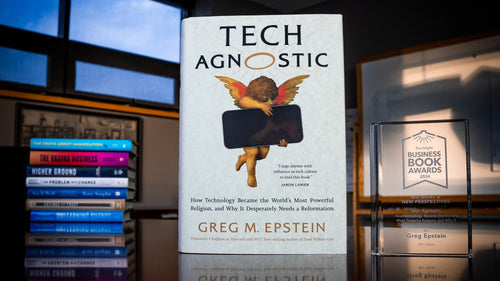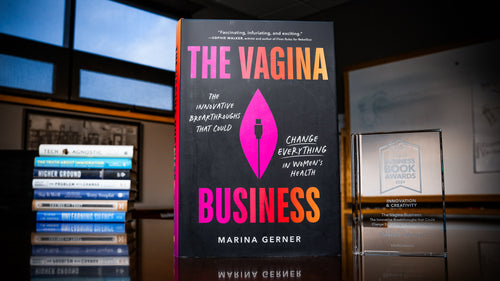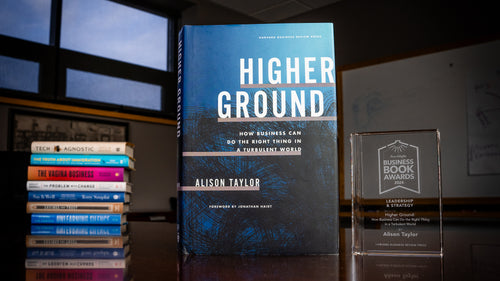Excerpt from Branded Male - Attacking Mr. JetSet
This excerpt is taken from chapter 6 of Branded Male: Marketing to Men by Mark Tungate. From the publisher: "Branded Male discusses the evolution of the male consumer and the efforts of marketers to tap into the underdeveloped male market. Using a typical modern male's weekday as a template, the book considers all the opportunities for marketing to him and the best ways to exploit these opportunities.
 This excerpt is taken from chapter 6 of Branded Male: Marketing to Men by Mark Tungate. From the publisher: "Branded Male discusses the evolution of the male consumer and the efforts of marketers to tap into the underdeveloped male market. Using a typical modern male's weekday as a template, the book considers all the opportunities for marketing to him and the best ways to exploit these opportunities. Through this template, Branded Male examines male-centered branding in areas as diverse as cars, restaurants, technology, fashion and grooming, bars, gyms and books. Tungate also traces the evolution of the male consumer over the course of the past years, providing insight into how marketing experts have successfully targeted men."
This excerpt is taken from chapter 6 of Branded Male: Marketing to Men by Mark Tungate. From the publisher: "Branded Male discusses the evolution of the male consumer and the efforts of marketers to tap into the underdeveloped male market. Using a typical modern male's weekday as a template, the book considers all the opportunities for marketing to him and the best ways to exploit these opportunities. Through this template, Branded Male examines male-centered branding in areas as diverse as cars, restaurants, technology, fashion and grooming, bars, gyms and books. Tungate also traces the evolution of the male consumer over the course of the past years, providing insight into how marketing experts have successfully targeted men."ATTACKING MR JETSET In Europe, many travelers are beginning to ask themselves whether flying is really the most efficient solution. Security phobia has turned most airports into Kafkaesque labyrinths, with Heathrow topping the list of travelers' least-loved hubs. Interminable check-ins, brusque security staff, the indignity of forced shoe removal and the injudiciously applied liquid ban are all encouraging consumers to snub airports -- at least for short-haul destinations. The alternative is Europe's growing network of high-speed rail services. With tickets growing more affordable and technology advancing apace -- trains now travel at up to 330 km/h -- gliding is becoming hipper than flying. In July 2007, seven of Europe's high-speed train operators formed an alliance called RailTeam, whose goal is to offer seamless rail transport across the continent (www.railteam.eu). At the time of writing, the service links France with the UK, Holland, Belgium, Switzerland, Germany and Austria. By 2010 it expects to carry 25 million customers and serve 65 cities. It is estimated that actual travel now accounts for 20 per cent of the flying experience, so for trips of a short to moderate length, the train makes more sense. With security kept to a minimum, business travelers can use the time they would have spent in a queue tapping away at their laptops while verdant countryside zips past their window. One of the main brands to benefit from this rail revolution is Eurostar, which in November 2007 opened its new terminal at St Pancras International. The station served a newly operational stretch of high speed rail line that cut journey times between London and Paris to two hours and fifteen minutes -- and between London and Brussels to just over an hour and fifty minutes. Eurostar UK marketing director Greg Nugent can list numerous reasons why the train is better than the plane, concern over climate change being one of them. 'Business people are well-informed and the debate about emissions certainly won't have escaped them. Many will opt for the train to reduce their carbon footprint, perhaps at the prompting of their employers. In general, though, they just hate being seen as out of date.' Eurostar has created a program called Tread Lightly, which aims to reduce carbon emissions by 25 per cent per customer by 2012. But this is by no means the first time the rail service has attacked air travel. In 2002, it embarked on an initiative to 'relaunch' the Eurostar brand with a campaign that directly targeted business travelers. At the time, there were already several factors in Eurostar's favor. The business world was tightening its belt after 9/11, with restrictions on travel expenditure. The image of flying was still wobbly, with residual paranoia about possible terrorist attacks. Eurostar was seen as relatively stress- and hassle-free compared to flying, and punctuality was at an all-time high -- an obvious plus for the business community. At the same time, however, Eurostar was being forced to compete with low-cost airlines. Many business travelers were locked into frequent flyer programes that delivered air miles. Worse than that, they considered Eurostar 'basic and functional' compared to the VIP service they were used to getting on long-haul business travel. Overseas trips were so linked to the executive lifestyle that some passengers felt that flying conferred status -- to fly for work was to have arrived. ('Eurostar -- How Mr JetSet made Eurostar. mean business', IPA Effectiveness Awards, 2006.) Greg Nugent recalls: 'When I came to work at Eurostar, it had very little experience in targeting business travelers. I felt they shouldn't be too much of a problem to reach because they were easy to spot and had obvious needs. We worked with a psychologist called John Armstrong to identify exactly what they got out of flying. Among several insights, we found that they felt flying on business gave them some sort of elite status, while secretly admitting that it was boring and stressful.' Business travelers demand special treatment. They do not like to be associated with tourists -- in fact, they like to remain as far away from the herd as possible -- and they demand certain comforts that help them work more efficiently either during or at the other end of their journey. But Nugent and his team unearthed another insight, which is that business travelers are not just business travelers. 'Looking at a crop of advertising campaigns at the time, we realized that business people were essentially being treated like idiots. They were all lumped into this Wall Street, hard-nosed executive category and they were expected to blindly buy into that. It was always the guy sitting on a plane in his shirt and tie being served a glass of champagne, or punching the air after sealing a deal.' Internally, this character was referred to as 'Lufthansa Man'. He later morphed into 'Mr JetSet'. 'We wanted to target the intelligent business traveler. After all, business people are just people. Yes, many of them will work on their way to a meeting -- but often, on the way home, they've loosened their ties and are getting stuck in to a good book, or a magazine, or a DVD. They're not the one-dimensional work machines you see in most of the advertising aimed at them. We felt that somebody like David Brent [the clueless boss in the TV series The Office] would take the plane just because he thought it was cool. But the more informed traveler would opt for the train.' Eurostar wanted to build a reputation around its business service, which includes stylish lounges, efficient online booking and a frequent travelers' program. Nugent adds: 'We worked on getting the experience right first, because if we'd just relied on the media, the campaign would not have succeeded. There has to be a very strong element of word-of-mouth.' Nevertheless, the print advertising campaign devised by Eurostar and its agency TBWA London was a key element. It featured an obnoxious cartoon character called Mr JetSet, who retained his fixed grin and self-satisfied demeanor despite the privations of flying. His catchphrase was, 'I came by plane, you know.' Other captions included: 'With no space for his laptop, Mr JetSet can demonstrate his mental agility'; and '35 missed calls only prove to Mr JetSet how important he is.' A closed check-in gave Mr JetSet ample opportunity to bellow about how crucial it was that he made his meeting. Each of the posters asked: 'Fed up with flying? Fly Eurostar.' In this way, the business traveler was practically shamed into choosing the train instead of the plane for reaching Paris or Brussels. Eurostar saw a subsequent sharp increase in the sales of business class tickets. While airlines are clearly safe from the challenge of rail on most routes, high speed trains are now criss-crossing Europe -- just as bullet trains are streaking across Japan, China and South Korea. The United States has long languished behind -- but airport misery, rising petrol prices and traffic congestion have brought the issue to the fore. The wait on the platform could be lengthy, however. 'U.S. passenger trains chug along at little more than highway speeds -- slowed by a half-century of federal preference for spending on roads and airports,' moaned The Chicago Sun-Times. It observed that although Congress is considering a six-year Amtrak funding bill, the measure proposes US$100 million in first-year grants, 'paltry considering that California alone needs US$40 billion for a mammoth bullet train project that would link San Francisco and Sacramento with Los Angeles and San Diego' ('Still on training wheels', 7 September 2007). In the United States and around the world, Mr JetSet will remain a familiar figure in the well-appointed executive lounges that are his natural habitat. But the Eurostar experience in the UK demonstrates that he is developing a conscience -- and that marketing to him requires more imagination than it did in the past. BRANDING TOOLKIT
- Business travelers are enthusiastic airport shoppers.
- They expect a luxurious travel experience.
- This includes sophisticated in-flight entertainment.
- In-flight marketing initiatives should add to their experience.
- Sleep, privacy and legroom remain important marketing tools.
- Frequent flyers are becoming concerned about their 'carbon footprint'.
- In Europe and parts of Asia, the train is threatening the plane.
- Business people are tiring of the 'inhumanity' of air travel.



